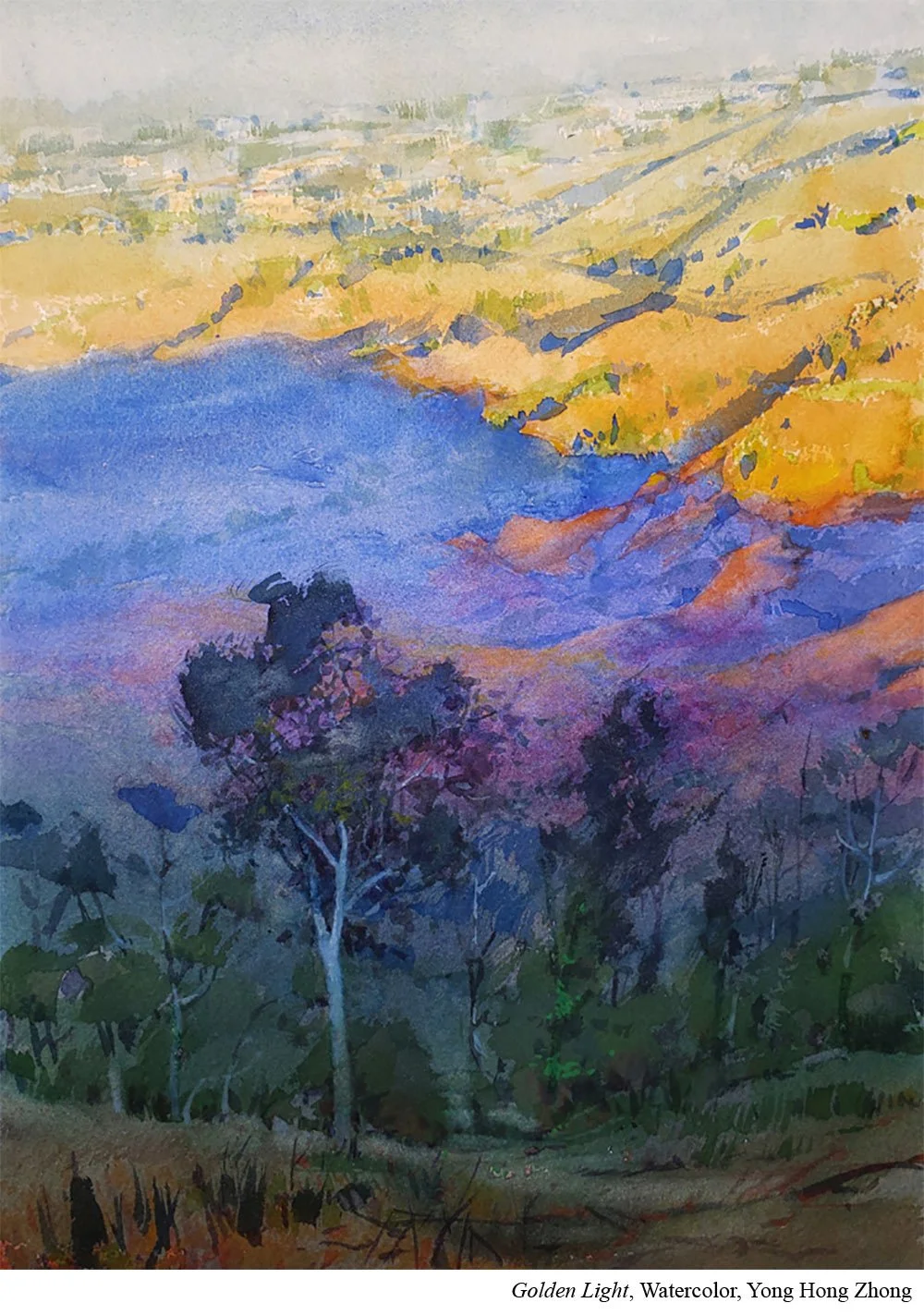Use More Paint (and What to do with the Leftovers)
One of the most common habits watercolor painters develop—especially when paint comes at a cost—is to use too little. Just a dab. Just enough to mix something up. Just enough to get by.
But artist Yong Hong Zhong (Ep.71) doesn’t work that way. And his bold, rich watercolors show what’s possible when you flip that mindset.
More Paint = More Possibility
Zhong doesn’t skimp on paint. In fact, he deliberately lays out more paint than he thinks he’ll need—big, juicy piles straight from the tube. Why?
Because having generous amounts of paint ready encourages him to actually use it.
And in watercolor, that’s how you get rich saturation, bold strokes, and deep, convincing darks. Especially for artists who work with thicker, drier pigment in their darkest passages, stinginess can limit the range and impact of your work.
But there's one potential downside: leftover paint.
Most of us have been trained to treat leftover paint as waste.
If it's dried up, we assume it’s time to clean the palette and start fresh. But Zhong takes a different approach—one that saves time, saves money, and supports a consistent painting practice.
Leftover Paint Isn’t a Problem—It’s a Resource
The beauty of watercolor is that it’s rewettable. You can bring dried paint back to life. Which means those leftover piles on your palette? They’re not trash—they’re treasure.
Zhong doesn’t throw his out, and neither should you.
Instead, he gives them a second life.
Put it to Practice:
Here’s how you can reuse your leftover paint like a pro:
Start with What You Have
Before you squeeze any fresh paint, look at your palette. Are there dried-up piles of good pigment still sitting there? If yes, spritz them with clean water.
Step Away for 10–15 Minutes
Don’t try to rush it. Let the water soak in and work its magic. Use this time to prep for your painting session—transfer a drawing, tape your paper, or gather supplies.
Come Back and Test
By the time you return, most of your colors should be soft, usable, and vibrant again—just like fresh paint. Do a few test swatches to see how they’re reactivating.
Check Paint Quality
If a color still feels chalky, gritty, or pale, that’s your cue—it might be time to refresh that one from the tube. But don’t assume it’s all gone just because it’s dry.
Paint More Consistently
This approach works best when there’s not too much time between sessions. The more regularly you paint, the fresher your palette stays—and the easier it is to reuse.
Watercolor rewards consistency, boldness, and resourcefulness. With this one small shift in mindset—treating your leftover paint as usable—you might just open the door to bolder, deeper, more expressive work.
Try it out, and see what happens when you give yourself permission to use more paint.
Get practical advice from today’s best painters sent straight to your inbox by signing up for the newsletter below.


